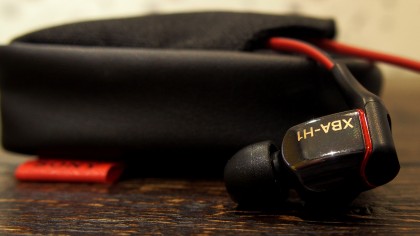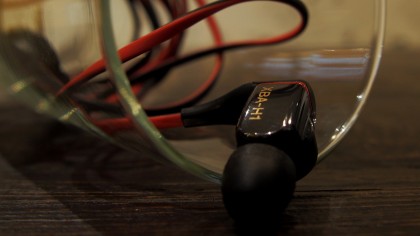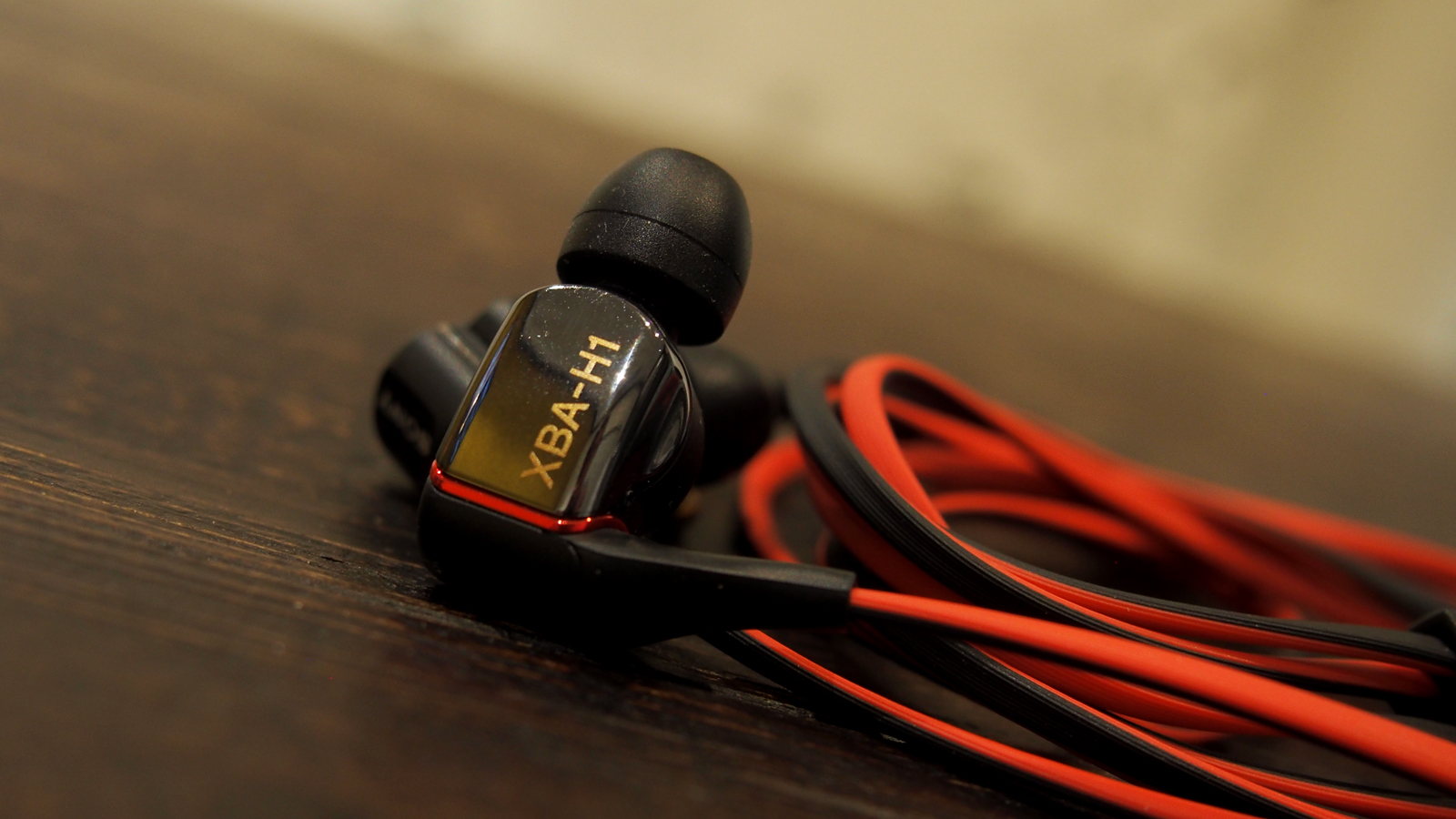TechRadar Verdict
If you seek strong performance and slick design in a set of in-ear headphones, the Sony XBA-H1 will satisfy on multiple fronts. That is, if you can look past the price and lack of inline controls considering.
Pros
- +
Edgy design
- +
Flat cables
- +
Powerful sound performance
Cons
- -
Premium price
- -
No inline controls
Why you can trust TechRadar
Being as small as they are, one might be quick to think that in-ear headphones generally can't push out sound performance that's worth writing home about. While there are endless examples that prove that thought to be a valid one, there are plenty of exceptions.
The Sony XBA-H1 is one of them. Proving that not all in-ear headphones are created equal, Sony's $150 (£84, AU$150) set is worth every penny if sound quality is a must. But those looking for a feature-dense headphone might want to look elsewhere.
Design
A step up in audio quality isn't reserved only for earphones with large speaker modules, like the Shure SE215. The XBA-H1 do good work in providing that boost, doing so while impressively retaining the compact shape of familiar earbuds that many of us have used before.
Upon first glance, it's plain to see that the Sony XBA-H1 boasts a design that doesn't play it safe. Instead of striding the line between subtle and sporty, it's comfortable being both.
Coated in plastic and rubber, each earpiece is pieced together with a primary focus on offering comfort and lightweight portability. Despite the lack of premium build materials here, the construction is top-notch.

The earpieces that house the sound drivers are featured prominently with a shiny, metallic-colored plastic piece that lists the model name. Flipped over, there's a colored marking that makes it clear to see which earpiece is designated for your left ear and for your right.
The XBA-H1 are able to achieve a comfy, noise-isolating fit while inserted into the ear, thanks to the included ear tips. There are seven sets of tips to choose from: four silicone and three foam tips. Once you find the right fit, these headphones cancel out a good deal of outside noise. Not only that, these headphones score big design points because their tips rarely ever come into contact with your outer ear cartilage while nested inside.
Sign up for breaking news, reviews, opinion, top tech deals, and more.
Hanging down from the earpieces are multi-colored, flat cables. Coated on one side with red and black on the other, this roughly three-foot cable is a saving grace for those of us who are all too familiar with knotted headphones. Unfortunately, inline controls are nowhere to be found on the XBA-H1, so keep your phone handy.

Included in the retail packaging that Sony sent to TechRadar for review is one more goodie: a slick, little tote. It's nothing flashy, but it's an appreciated inclusion given the $150 price tag.
Performance
Visually, the Sony XBA-H1 offers up an appealing design that will likely draw in fans of sporty and clean designs alike. Inside the earpieces, Sony has engineered powerful sound performance that will also appeal to the lot of music lovers.
But before I could get to listening, I had to go through the process of fitting them inside my ear. Yes, it's a bit of a process, but it's no harder than trying on shoes. It's an important step, and the end result is so worth the effort.

Sitting at my desk, things are relatively quiet, so the silicone tips work well in that scenario. But once I head home on the noisy subway, switching over to the foamed tips is basically a must. These offer a huge increase in noise isolation, a welcomed inclusion in the package.
The sound performance put out by the Sony XBA-H1 packs a punch. This is all thanks to the hybrid driver unit, which just by the name itself requires a little explaining.
When choosing between in-ear headphones, some will differ in driver designs. Two commonly used designs are the balanced armature design and the dynamic design. Each type comes with a list of supposed pros and cons.
Dynamic driver design reigns supreme in bass response and offers a warmer sound signature. Indeed, the Shure SE215 provided both of those qualities.

Alternatively, balanced armature design offers snappier, more detailed mids, but tend to lack the deep "oomph" found in dynamic drivers. You'll find this type of driver packed into the Klipsch X10i, for example.
Sony's hybrid driver unit somehow combines both driver designs into one in the XBA-H1. This is quite the achievement, as the sound is crisp, responsive and, in my findings, the bass more than met my liking.
The unique driver design paired with excellent noise isolation yields great results. My only tiff, – and it's a big one to me, at least – is that these headphones don't have inline controls.
Because of this omission, these earphones might be great plug-and-play options for computer use, but present an issue when you have to grab for your music device for every song or volume change.
We liked
Instead of choosing one over the other, Sony included a driver unit that features the best of both the balanced armature and dynamic designs. Not only does this add value, it sounds wonderful.
Plus, the design is flat-out appealing. Extra goodies, like the flat cable and the included ear tips, work as fantastic value-adds.
We disliked
However, at $150, it's fair to expect a little more. The lack of inline controls doesn't go by unnoticed. In fact, if not for this omission, the XBA-H1 would have otherwise been a must-have product despite the high price tag.
Final verdict
The Sony XBA-H1 excels by extending a hand to the sporty and minimalistic types. It also does well to include the best of two types of in-ear drivers in one package, which makes for a fantastic sound profile.
Where some people might fall off the XBA-H1 bandwagon is the price, considering the lack of inline controls. Regardless, if you can swing the cash and don't mind this limitation, you're in for an incredibly nuanced and rewarding listening experience.

Cameron is a writer at The Verge, focused on reviews, deals coverage, and news. He wrote for magazines and websites such as The Verge, TechRadar, Practical Photoshop, Polygon, Eater and Al Bawaba.
